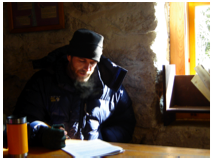Artificial Glaciers
Ladakh, India is a fragile place. With less then 7 cm. of rain on average and with an 11,000 foot average altitude, life is difficult. When Molly and I visited Ladakh in the summer of 2005, we were struck by both the barrenness of the landscape and how ingeniously the locals carved out rich and beautiful lives for themselves. Stone walls, irrigation canals, micro hydro projects, terracing, building swales: the Ladakhis are long adept at using and managing their most precious resource: water. Instead of high input, top-down mega dams and earth moving projects, the Ladakis have made the most of their water for centuries using a very simple and elegant systems for capturing water; systems that do not slowly degrade and eventually destroy the local ecology.


No comments:
Post a Comment